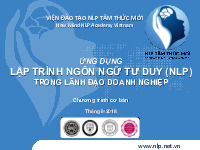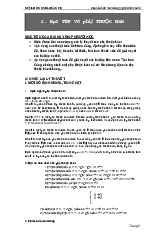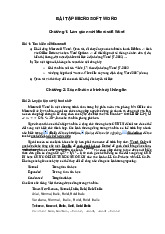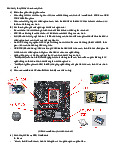




Preview text:
How do I connect to the Internet?
Once you've set up your computer, you may want to purchase
home Internet accessso you can send and receive
email, browse the Web, stream videos, and more. You may even
want to set up a home wireless network, commonly known
as Wi-Fi, so you can connect multiple devices to the Internet at the same time.
Watch the video below to learn about connecting to the Internet. Types of Internet service
The type of Internet service you choose will largely depend on
which Internet service providers (ISPs) serve your area, along
with the types of service they offer. Here are some common types of Internet service.
Dial-up: This is generally the slowest type of Internet
connection, and you should probably avoid it unless it is the only
service available in your area. Dial-up Internet uses your phone
line, so unless you have multiple phone lines you will not be able
to use your landline and the Internet at the same time.
DSL: DSL service uses a broadband connection, which
makes it much faster than dial-up. DSL connects to the
Internet via a phone line but does not require you to have a
landline at home. And unlike dial-up, you'll be able to use the
Internet and your phone line at the same time.
Cable: Cable service connects to the Internet via cable TV,
although you do not necessarily need to have cable TV in order to
get it. It uses a broadband connection and can be faster than both
dial-up and DSL service; however, it is only available where cable TV is available. 1
Satellite: A satellite connection uses broadband but does
not require cable or phone lines; it connects to the
Internet through satellites orbiting the Earth. As a result, it
can be used almost anywhere in the world, but the connection
may be affected by weather patterns. Satellite connections are
also usually slower than DSL or cable.
3G and 4G: 3G and 4G service is most commonly used with
mobile phones, and it connects wirelessly through your ISP's
network. However, these types of connections aren't always as
fast as DSL or cable. They will also limit the amount of
data you can use each month, which isn't the case with most broadband plans.
Choosing an Internet service provider
Now that you know about the different types of Internet
service, you can do some research to find out what ISPs are
available in your area. If you're having trouble getting started, we
recommend talking to friends, family members, and neighbors
about the ISPs they use. This will usually give you a good idea of
the types of Internet service available in your area.
Most ISPs offer several tiers of service with different Internet speeds, usually measured in Mbps (short
for megabits per second). If you mainly want to use the Internet
for email and social networking, a slower connection (around 2
to 5 Mbps) might be all you need. However, if you want
to download music or stream videos, you'll want a faster
connection (at least 5 Mbps or higher).
You'll also want to consider the cost of the service, including
installation charges and monthly fees. Generally speaking, the
faster the connection, the more expensive it will be per month. Although dial-up has traditionally been the least
expensive option, many ISPs have raised dial-up prices to be
the same as broadband. This is intended to encourage people 2
to switch to broadband. We do not recommend dial-up Internet unless it's your only option. Hardware needed Modem
Once you have your computer, you really don't need much
additional hardware to connect to the Internet. The primary piece
of hardware you need is a modem.
The type of Internet access you choose will determine the type of modem you need. access Dial-up uses a telephone
modem, DSL service uses a DSL modem, cableaccess uses
a cable modem, and satellite service uses a satellite adapter.
Your ISP may give you a modem—often for a fee—when you sign a
contract, which helps ensure that you have the right type of
modem. However, if you would prefer to shop for a or better less
expensive modem, you can choose to buy one separately. Router 3
A router is a hardware device that allows you to connect several and computers
other devices to a single
Internet connection, which is known as a home network. Many
routers are wireless, which allows you to create a home
wireless network, commonly known as a Wi-Fi network.
You don't necessarily need to buy a router to connect to
the Internet. It's possible to connect your computer directly to
your modem using an Ethernet cable. Also, many modems include
a built-in router, so you have the option of creating a Wi-Fi
network without buying extra hardware.
Setting up your Internet connection
Once you've chosen an ISP, most providers will send a
technician to your house to turn on the connection. If not, you
should be able to use the instructions provided by your ISP—or
included with the modem—to set up your Internet connection.
After you have everything set up, you can open your web
browser and begin using the Internet. If you have any problems
with your Internet connection, you can call your ISP's technical support number. Home networking 4
If you have multiple computers at home and want to use all of
them to access the Internet, you may want to create a home
network, also known as a Wi-Fi network. In a home network, all
of your devices connect to your router, which is connected to
the modem. This means everyone in your family can use the
Internet at the same time.
Your ISP technician may be able to set up a home Wi-Fi network
when installing your Internet service. If not, you can review our
lesson on How to Set Up a Wi-Fi Networkto learn more. 5




